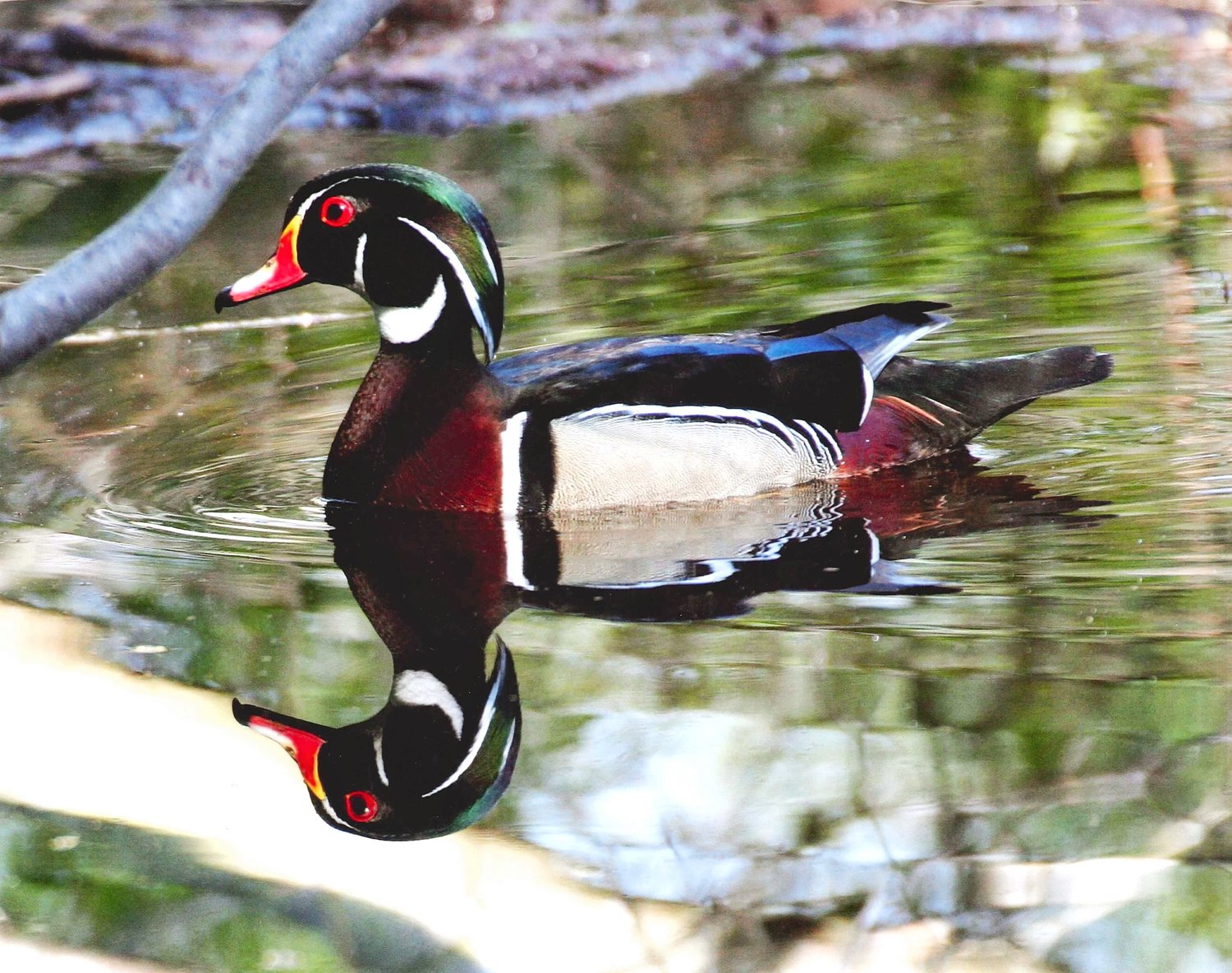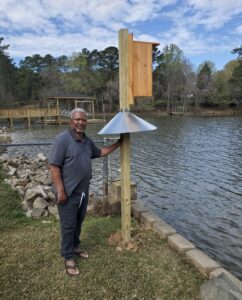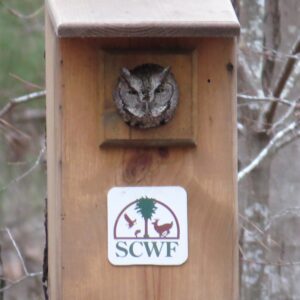
Keep South Carolina Wild
March 22, 2022

To restore habitat for two bird species in the Upstate, the South Carolina Wildlife Federation is partnering with Duke Energy to construct and install 40 Wood Duck nesting boxes and 40 Eastern Screech-Owl nesting boxes in the Keowee-Toxaway watershed.
SCWF will coordinate with property owners, volunteers, biologists, and rangers to determine suitable sites for the boxes. The goal is to install boxes prior to the start of the 2023 nesting season. Boxes will be placed in locations that are convenient for monitoring and maintenance.
Species-specific information:
 Eastern Screech-Owls: Eastern Screech-Owls heavily rely on adequate habitat and nesting sites for survival. They are found throughout a range of sites including, but not limited to, farmland, suburban landscapes, and city parks. Although they are currently listed as a species of Least Concern, Eastern Screech-Owl populations are declining due to habitat fragmentation and deforestation. Providing suitable habitat, such as a nesting box, is integral to the success of this species. Nest boxes should be placed at a woodland’s edge with adjacent fields and/or wetlands. It is helpful if a branch, or something equivalent is installed below the entrance hole, or is located on the post or tree on which the box is attached. There should be no obstructions in front of the entrance hole so the owl has a clear flight path into the cavity.Volunteer involvement is integral in helping to foster community-wide awareness and appreciation for the project. The nest box project aims to engage the community in long-term and sustained conservation actions. This project is great for people of all ages. SCWF is actively searching to recruit volunteers to assist in all facets of the project, including nest monitoring, data recording, and witnessing first hand the life cycle of these birds.
Eastern Screech-Owls: Eastern Screech-Owls heavily rely on adequate habitat and nesting sites for survival. They are found throughout a range of sites including, but not limited to, farmland, suburban landscapes, and city parks. Although they are currently listed as a species of Least Concern, Eastern Screech-Owl populations are declining due to habitat fragmentation and deforestation. Providing suitable habitat, such as a nesting box, is integral to the success of this species. Nest boxes should be placed at a woodland’s edge with adjacent fields and/or wetlands. It is helpful if a branch, or something equivalent is installed below the entrance hole, or is located on the post or tree on which the box is attached. There should be no obstructions in front of the entrance hole so the owl has a clear flight path into the cavity.Volunteer involvement is integral in helping to foster community-wide awareness and appreciation for the project. The nest box project aims to engage the community in long-term and sustained conservation actions. This project is great for people of all ages. SCWF is actively searching to recruit volunteers to assist in all facets of the project, including nest monitoring, data recording, and witnessing first hand the life cycle of these birds.
Tags: Habitat, upstate, Wildlife, SCDNR, Duke Energy, Wood Ducks, Keowee, Toxaway, Screech Owls

“This (POWR) retreat made me realize the areas I had a good foundation in, filled in some other knowledge gaps, and gave me confidence to do these outdoor activities by...

SCWF was honored to be featured in the SC Sea Grant Consortium’s Coastal Heritage Magazine in their Spring 2023 issue. Check out the full article by Erica Hussey on their...

Thanks to all who came out to our New Year New Members Event last night at Columbia Craft Brewery! Click on the photo below to scroll through the slideshow of...